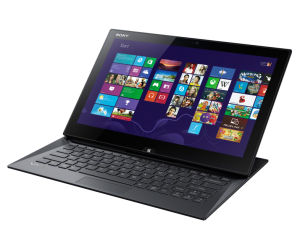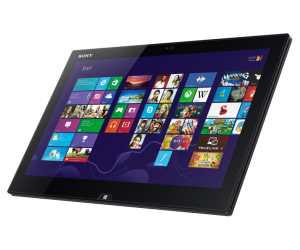October 17th brings General Availability for the first update for Windows 8, referred to as Windows 8.1. Windows 8 is Microsoft’s attempt to bring its OS ecosystem into the touch age and compete with Apple’s successful iphone and ipad devices running iOS, and Google’s Android powerhouse. Since the release of Windows 8, the media and industry “experts” have called Windows 8 “Microsoft’s next Vista fiasco” and that Windows 7, however successful in corporate environments, can’t compete when compared to touch devices the competition has in the consumer market. Returning a year later with Windows 8.1, Microsoft listened to the feedback of corporate users and tried to ease the shock when transitioning from Windows XP or 7, when moving to Windows 8. Many enterprise users put the icons for the applications they use most on the desktop or taskbar. Microsoft has added the ability to boot straight to the desktop if you chose, and while pressing the Windows button takes you the “Metro” grid of icons and apps, you can customize what now appears there and make the background match. Most users I have spoken to that tried the Windows 8.1 Evaluation, liked the consistency between the desktop and, at least initially, only bring up the tiles when launching a new app. With Windows 8.1 Professional and Enterprise, all of your Windows 7 applications work just the way you expect them to, so the impact of the change for most users will be minimal. There are many new and revised features in Windows 8.1, and it warrants another look. It’s not just about Windows 8.1, it’s the devices With the release of Windows 8.1, it’s also time to re-evaluate Windows 8 and the new ecosystem of devices that enable it. Critics panned the battery life for the original Surface and similar devices, since they constantly compared them to an Apple iPad. I have never thought this was a fair comparison, as the iPad is running a scaled up version of their phone OS (you remember the apps are compatible between the two) and Windows 8 for Tablets is a full OS, not the same as their phone, although Microsoft does seem to be headed in that direction. 8.1 is designed to fully embrace new computing devices like tablets and Ultrabooks by offering touch support, advanced compatibility features and more online security, data protection and better battery life. These benefits can be further enhanced by combining 8.1 with new Intel based architecture and processors that offer enhanced performance and manageability than ever before. I personally own the Sony Duo 13 2-in-1 with an i7 processor. I have been using it for a month, and even with many of my legacy apps installed, I average 9 to 10 hours on the battery. I was sceptical at first, but many the benchmarks reported by devices utilizing the Intel Haswell architecture are very accurate. I realize that this particular machine is at the high end of the device range, but it does show us what is possible.
Example of a Windows 2-in-1 Ultrabook
(image source: Sony)
I travel frequently for work and the Sony Duo 13 has become my primary machine as it supports both laptop and tablet modes. I realize many people will say at just under 3 pounds its heavy for a tablet, but I argue those people seem to have completely missed the point of the 2-in-1 convertible. Like an ipad, you aren’t supposed to be able to “do productive work” while in tablet mode, you just have all of your data with you to consume, review or demonstrate. If you want to be productive, you switch to laptop mode and you have a full power system with touch. That’s something an ipad can’t do, even if you do add a magnetically attached Bluetooth keyboard. Windows 8.1 focus on the Enterprise Enterprise customers, as well as consumers, want touch based input devices. IDC[1] says that ‘touch will be everywhere by 2014’. In fact, Businesses are 1.7 times more likely to prefer Ultrabook devices over notebooks[2]. An Ultrabook is a device that has the same power and a standard laptop, but weights less than 3 pounds and has a touch screen. If you have ever had to run from one terminal to another in an airport to catch a connecting flight, you appreciate having a device that is so light compared to the 7 to 8 pound beasts of just a couple of years ago. If the power of the machine is the same at a third of the weight, why wouldn’t you want it for that reason alone? Of course, IT managers must carefully measure and justify all their investments, taking into account not only the upfront price of new equipment, but also all ongoing implications in terms of staff productivity and maximizing existing investments. When introducing a new mobile computing model, organizations must therefore find a solution that is easy to implement and maintain, makes sense for end users, and is easily compatible with their existing IT ecosystem. An analysis of Tablets in the Enterprise[3] carried out in January 2013 by Intel-IT on the TCO of Windows 8 running on Intel technology-based tablets. It indicates that Windows 8 on Intel tablets could actually be around 25% less expensive to operate than on other tablets:- The cost of software and applications is estimated to be about 40-50% lower for Windows 8 on Intel tablets. This is mainly due to the fact that Windows 8 on Intel allows for the installation of software such as Microsoft Office and so does not require any middleware such as virtual desktop infrastructure and Windows Remote Desktop Services to make it work.
- IT operations labour costs went down by 6-31% for Intel-based Windows 8 tablets compared to most other tablet platforms. The primary reason for this that the Intel x86 architecture is the only tablet operating system environment that allows for system-wide image management for both Windows 8 Modern-style and legacy Win32/64 applications using existing PC client management tools. Administration and management were also expected to be slightly lower since these costs are roughly proportional to the IT labour costs.
- Application development costs were expected to be substantially lower as a result of using Win32/64 architecture. Conversely, costs in some other environments (eg Android) were expected to be significantly higher due to the complexity of developing apps that need to work in various versions and tablet environments from multiple vendors.
- Choice – one size does not fit all, but the Intel/Windows 8 platform supports a wide range of form factors and they can help find the right one for any organization
- Preserving IT investment – this platform is fully compatible with legacy software, peripherals, infrastructure and management investments
- Consistent experience – a common user interface and compatibility across a broad range of devices to keep your Connected Workforce happy
- Data security – built-in capabilities of Windows 8 on Intel Architecture can lock down lost systems from anywhere, wipe corporate data when lost, protect users’ online identity and recover in cases of false alarm
- Productivity – 74% of IT decision makers say that tablets increase productivity
- Power Management – Moor Insights and Strategy[4] found that the new breed of enterprise tablet, powered by Intel technology, have a competitive base battery life that can be configured to last twice as long as the iPad 4.
- Fast to Start – Windows 8 Hybrid Boot with an Intel technology-based device starts 50% faster than with Windows 7[5]

 English | EN
English | EN 


